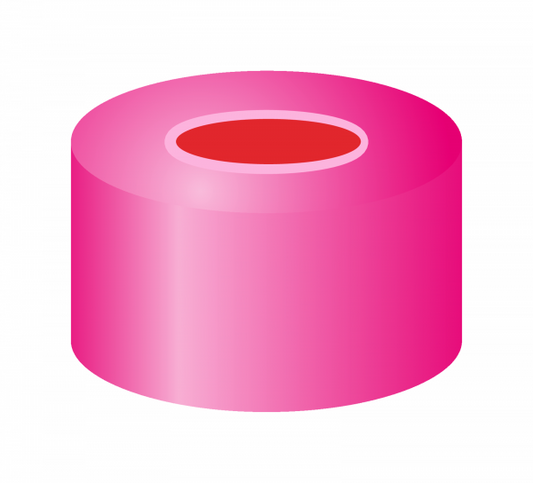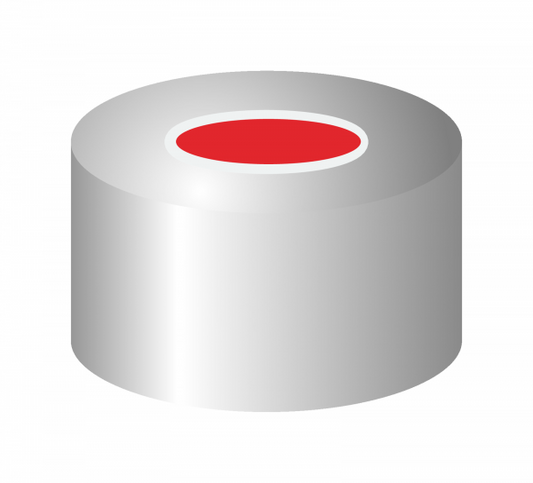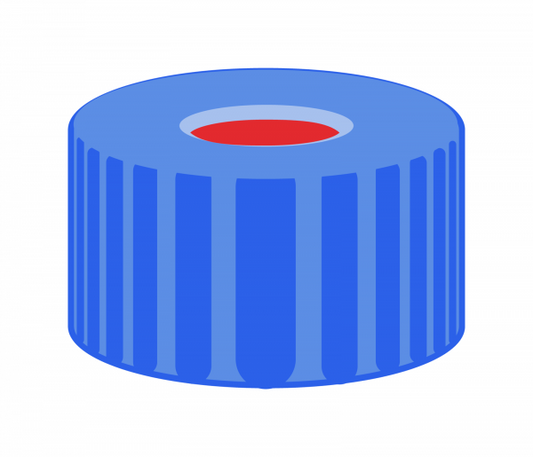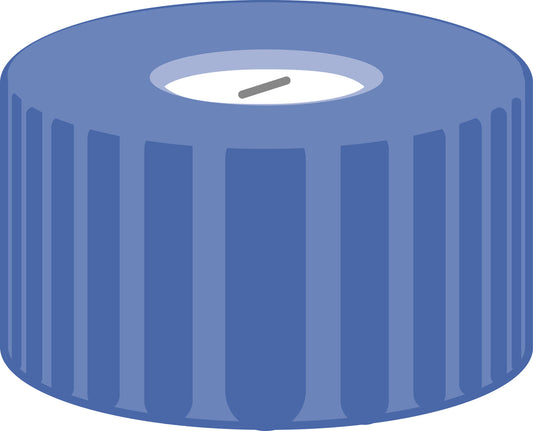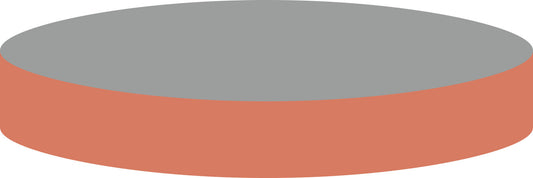The choice of the best closure depends on certain features of the instrument (needle type / design, transportation mechanism of the autosampler, etc.) as well as on the requirements of the application (temperature, sensitivity of the analysis, single / multiple injections, etc.) and thus is more complicated and more individual than selection of the correct vial type. The individual physical and chemical characteristics of the various septa materials are a decisive factor in the selection of a suitable closure.
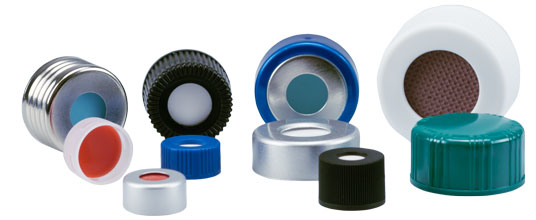
Good to know
- Thick / blunt HPLC needles require soft Silicone /PTFE closures, either slit or unslit.
- Snap ring closures N 11 are recommended for HPLC only, as their punctual compacting pressure doesn’t achieve the same level of tightness as the evenly applied pressure through a circular thread or by crimping.
- Screw closure N 9 and N 18 are not standardized in thread design. To ensure a harmonious and tight matching of both components, please only use vials and caps out of one source.
- Closed top screw closures for sample storage also need an elastomeric liner for sealing vials with liquid samples tightly.

Basic recommendations
Additionally to the features of the septa materials the following basic recommendations can be made:
- Advantages of screw closures N 9 – universally suitable on most autosamplers, convenient in handling and available in a broad selection of different cap colors and septa materials. They fulfill all requirements with regard to tightness and analytical purity for GC as well as for HPLC. Due to the relatively thin septa penetration is safe and easy. Crimp closures N 11 are also universally suitable with regard to autosampler compatibility, however, they are not as safe and convenient in their closing technique as the screw closures N 9.
- Bonded closures – Normally ready assembled closures should be suitable for all types of needles, provided the proper type of septum has been selected. Nevertheless, there might be cases where usage of bonded closures (cap and liner form an in- separable unit) can be recommendable. Example: blunt HPLC needle, however, due to the risk of sample loss / concentration changes no septa with slit can be used. In order to avoid that the unslit septum is pushed into the vial by the needle, you use a bonded closure with unslit septum.
- Cap colors – used for marking (sample marking / lab marking / shift marking). However, please consider that some autosamplers work with photocells which may not be able to recognize transparent caps.
- Penetration – the ability to penetrate a septum depends on its hardness and total thickness. The hardness (durometer) is indicated in “° shore”. For easily bending needles as well as for blunt needles with penetration problems soft and preferably thin septa should be chosen. This supports needle safety (clogging / bending of the needle) as well as reliability of the analysis (no contamination of the sample due to too much fragmentation during penetration).
- Replacement septa – partially available, however, in case of manual assembly you have the risk of contamination with skin fat / sweat and of a possible wrong side orientation. Therefore we highly recommend only to use ready assembled closures, where the liner perfectly matches the cap and has been automatically inserted under strict hygienic conditions.


